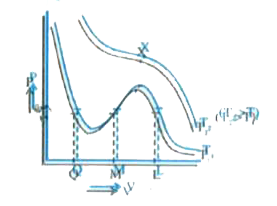The reaction 2ClOϴ(aq)→2Clϴ(aq)+2Cl−(aq) is an example of Solution in Telugu
oxiclatio reaction
Reduction reaction
Disproportionation reaction
Decomposition reaction
The correct Answer is:A, B, C, D
Step by step video, text & image solution for The reaction underset((aq))(2ClO^(ϴ))tounderset((aq))(2Cl^(ϴ))+underset((aq))(2Cl^(-)) is an example of by Chemistry experts to help you in doubts & scoring excellent marks in Class 12 exams.
Updated on:21/07/2023Topper's Solved these Questions
- STOICHIOMETRYBOOK - AAKASH SERIESCHAPTER - STOICHIOMETRYEXERCISE - ADDITIONAL PRACTICE EXERCISE LEVEL -II (LECTURE SHEET (ADVANCED) LINKED COMPREHENSION TYPE QUESTIONS)
5 Videos
- STOICHIOMETRYBOOK - AAKASH SERIESCHAPTER - STOICHIOMETRYEXERCISE - ADDITIONAL PRACTICE EXERCISE LEVEL -II (LECTURE SHEET (ADVANCED) MATRIX MATCHING TYPE QUESTIONS)
2 Videos
- STOICHIOMETRYBOOK - AAKASH SERIESCHAPTER - STOICHIOMETRYEXERCISE - ADDITIONAL PRACTICE EXERCISE LEVEL -II (LECTURE SHEET (ADVANCED) (STRAIGHT OBJECTIVE TYPE QUESTIONS)
10 Videos
- STATES OF MATTER BOOK - AAKASH SERIESCHAPTER - STATES OF MATTER EXERCISE - ADDITIONAL PRACTICE EXERCISE -PRACTICE SHEET (ADVANCED) (LINKED COMPREHENSION TYPE QUESTIONS) (PASSAGE- IV)
2 Videos
- SURFACE CHEMISTRYBOOK - AAKASH SERIESCHAPTER - SURFACE CHEMISTRYEXERCISE - Objective Excersice - 4 (ASSERTION (A)& REASON (R ) TYPE QUESTION)
34 Videos
Similar Questions
Iodine titration can be iodemotric or iodimetric depending on using iodine directly or indirectly is an oxidising agent in the redox titration.
a. Iodimetric titration in which a standard iodine solution is used as an oxidant and iodine is directly or indirectly titrated against a reducing agent. For example.
2CuSO4+4KJ→Cu2I2+2K2SO4+I2
b. Iodimetric procedures are used for the datermination of strength of reducing agent such as thiosulphates, sulphites, arsenties adn stanous chloride etc. by titrating them against standard solution of iodine in a burette.
2Na2SO3→2NaI+Na2S4O6
Starch is used as indicator near the end point whilch form blue colour complex with I−3. The blue colour disappeams when there is not more of free I2 .
The volume of KI solutioin used for CuSO4 will be
View SolutionMatch the concentration terms with the factors affecting the concentration.

View SolutionA solid element has specific heat 1Igm−1k−1. If the equivalent weight of the element is 9. Identify the valency and atomic weight of element.
View SolutionAt a particular temperature and pressure for a real gas Van der Waal's equation can be written as:
(P+aV2m)(Vm−b)=RT

where Vm is molar volume of gas. This is cubic equation in the variable Vm and therefore for any single value of P & T there should be 3 values of Vm. Which are shown in graph as Q, M and L.
As temperature is made to increase at a certain higher temperature the three values of Vm becomes identical. The temperature, pressure & molar volume at point X are called Tc, Pc & Vc for real gas. The compressibility factor in terms of Pc, Vc and T is called Zc.
The expression of Van dcr Waal's constant 'a' can be given as
View Solution(A) De-emulsification is a reverse process of emulsion formation
(R ) During de-emulsification , the emulsion breaks to give oil and water.
View SolutionThe reaction 3ClO^(ө)(aq)rarrClO_(3)(aq)+2Cl^(ө)(aq) is an example of
View SolutionWhat sort of informations can you draw from the following reaction?
(CN)2(g)+2ΘOH(aq)→CNΘ(aq)+CNOΘ(aq)+H2O(l)
View SolutionThe reaction 3ClO−(aq)→ClO−3(aq)+2Cl−(aq) an example of :
View SolutionThe 3ClO^(-)(aq.)to ClO_(3)^(-)(aq.)+2Cl^(-)(aq.) is an example of
View SolutionThe reaction, 3ClO^(-) (aq) rarr ClO_(3)^(-) (aq)+2Cl^(-) (aq) , is an example of
View SolutionIdentify the oxidant the reductant in the following reaction. Cl_(2)(g) + 2Br^(-)(aq) to 2Cl^(-)(aq) + Br_(2)(aq)
View SolutionWhat sort of informations can you draw from the following reaction?
(CN)2(g)+2ΘOH(aq)→CNΘ(aq)+CNOΘ(aq)+H2O(l)
View Solution4ClO−3(aq)→3ClO−4(aq)+Cl−(aq) is an example of
View SolutionIdentify the oxidant and the reductant respectively in the following reaction. Cl_(2)(g) + 2Br^(-)(aq) to 2Cl^(-)(aq) + Br_(2)(aq)
View SolutionPbCl2⏐↓+hot water→Pb2(aq.)+2Cl−(aq.)
View Solution
